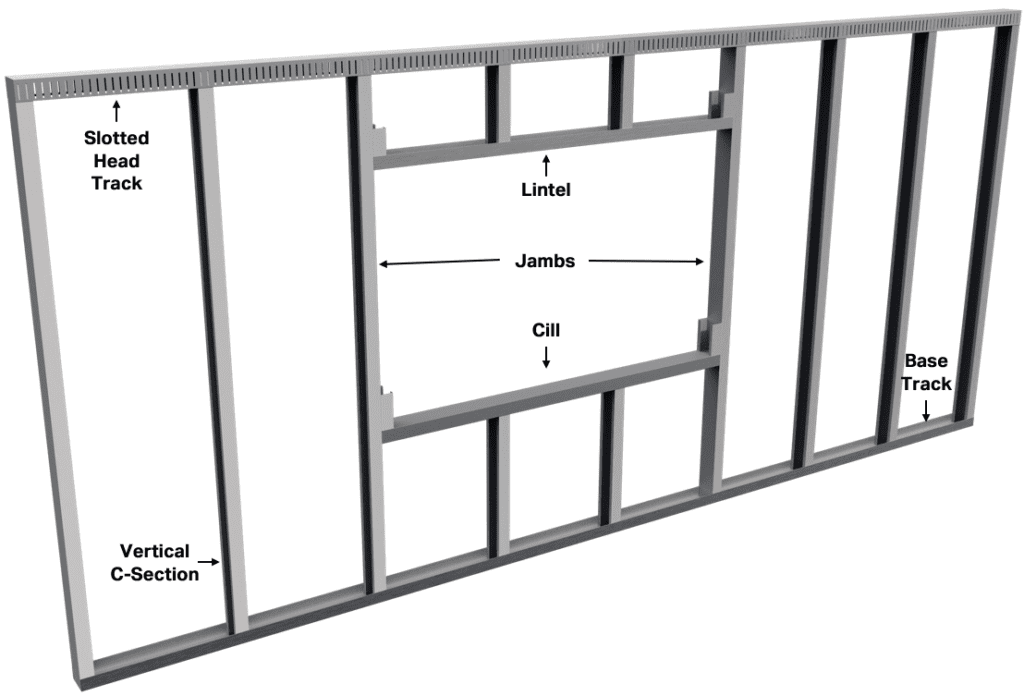What is infill walling?
System Overview
Infill walls, also known as SFS, are the non-loadbearing external walls built between floors of a primary structural frame; they are used to provide support for the cladding system.
Infill System
Non-loadbearing external wall system
Infill walls do not support floor loads, but are able to resist wind loads applied to the façade. Light steel infill walls, utilising vertical C-section studs, have become the preferred choice for both steel and concrete-framed buildings, largely replacing traditional masonry or timber alternatives.
Intrastack’s light steel infill walls (SFS) use vertical C-sections, known as studs, spanning between the floors of the primary frame and around openings. The size and spacing of C-sections are selected based on structural requirements, as well as compatibility with external façade materials and standard plasterboard widths. Wall panels can be pre-fabricated as storey-high units or assembled on-site from cut-to-length C-sections, offering flexibility for different construction scenarios.

Infill Wall Panel Elements
Key Benefits of SFS:
- Quick Installation: Allows other construction activities to proceed sooner than possible with traditional blockwork infill.
- ‘Dry’ Construction Process: Eliminates shrinkage and drying-out issues, ensuring stability and durability.
- Design Flexibility: Achieve architectural freedom with the ability to construct tall walls up to 5 meters and incorporate large windows, parapets, and other features seamlessly.
- Superior Fire Resistance: Ensure safety with fire resistance up to 120 minutes using multiple layers of fire-resistant plasterboard.
- Exceptional Acoustic Insulation: Enjoy peace and quiet with over 60dB of acoustic insulation, when using double layers of plasterboard and insulating quilt between vertical C-sections.
- Enhanced Thermal Efficiency: High levels of thermal insulation provided by various external insulation boards, create a ‘warm frame.’
- Versatile Cladding Support: Various cladding systems can be utilised, offering versatility and aesthetic appeal.
- Lightweight Construction: Experience the benefits of lighter and thinner walls, reducing line loads on the floor without compromising structural integrity.
GypLyner Xternal – A Complete Through-Wall SFS Solution
Intrastack offers a complete through-wall solution with trusted Saint-Gobain partner brands, British Gypsum and Isover.
GypLyner Xternal has a range of detailed and tested fire and thermal performance specifications, all supported by market leading technical evidence.